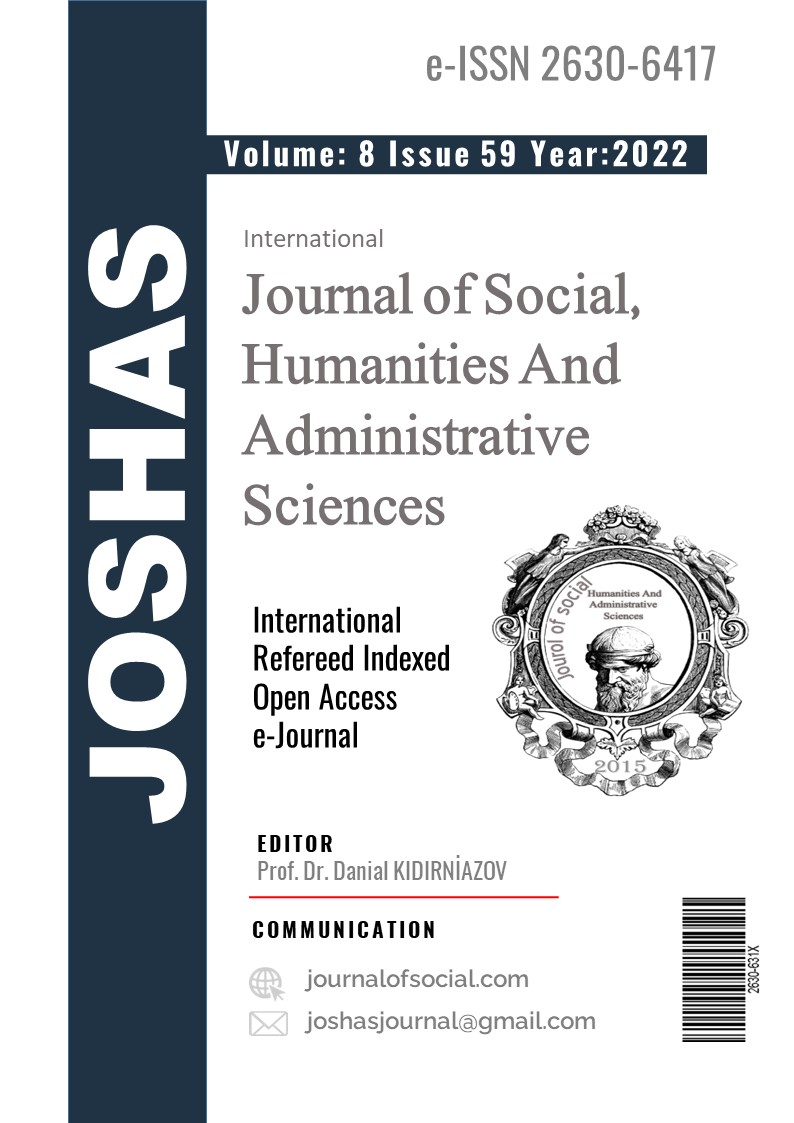Author :
Abstract
Sanayi devrimi ile beraber, varlığına mağaralarda barınarak başlayan insanlık hızlı bir evrimsel sürece girmiş, insan olmanın ne olduğuna değin tartışmalar başlamıştır. Sanat da bu tartışmalar doğrultusunda, tanımlara sığmasını imkânsız kılan bir değişim içine girmiştir. Post- ön ekinin yaygın olarak bir çok kavramda kullanıldığı günümüz yaşantısında, sanatta da post hareketler kendilerini göstermektedirler. Postmodernizm ile başlayan ve post-truth, posthümanizm gibi kavramlar ile devam eden bir sürecin içine girilmiştir.
Sanatsal eylemlerde bu yoğun değişim özellikle 1800'lerin sonlarında boy göstermeye başlamıştır. 20. yüzyılın başlarında, atölyelerin mekanikleşmesi, üretimin farklı bir boyut kazanması, ardından başlayan Dünya Savaşları ve 20. yüzyılın ikinci yarısının sonlarına doğru başlayan toplumsal hareketler sanatta yeni hareketlerin doğmasına neden olmuştur.
21 yüzyılın başlarında ise, mevcut tartışmalara yenileri eklenmiştir. Antroposen olarak nitelenen bu çağda teknoloji üzerine araştırmalar hız kazanmış ve toplumun her kesiminden insanın teknolojik gelişmelere ilgi ve ihtiyaç duyduğu bir dünya durumu oluşmuştur. Olumlu yönleri ile gelen teknoloji aynı zamanda küresel ısınma gibi olumsuzluklara da sebebiyet vermiştir. Teknoloji, öngörülemez gelişimi ve kontrolsüzce ilerlemesi nedeniyle toplumun bazı kesimlerinde kaygıya sebep olmuştur. Bu kaygıdan kaynaklanan teoriler üretilmiştir. Geçmişten bugüne gelen ve simülasyon teorisi çevresinde dönen bu yaklaşımlara Jean Baudrillard, Nick Bostrum ve Guy Debord gibi isimler güncel katkılar sağlamışlardır.
Toplumdaki bu kaygılara ve teorilere karşın Yapay Zekâ üzerine araştırmalar hızla devam etmektedir. Yapay Zekâ kaynaklı GAN ya da Deepdream gibi algoritmalar sayesinde hayal gücümüzü aşan sanatsal eylemler gerçekleştirilebilmektedir. Sanatçı Mario Klingemann da bu araçları kullanarak eserler üreten öncü kişilerden biridir.
Bu çalışmada Klingemann’ın eserleri ele alınarak, teknoloji ve sanat ilişkisi, sanatçıyı bu araçları kullanarak üretime iten faktörler ele alınmıştır.
Keywords
Abstract
With the industrial revolution, humanity, which started its existence by sheltering in caves, entered a rapid evolutionary process, and discussions began about what it means to be human. In line with these discussions, art has entered into a change that makes it impossible to fit into definitions. In today's life, where the post- prefix is widely used in many concepts, post movements also show themselves in art. It has been entered into a process that started with postmodernism and continued with concepts such as post-truth and posthumanism.
This intense change in artistic actions started to appear especially in the late 1800s. At the beginning of the 20th century, the mechanization of the workshops, the production gaining a different dimension, the World Wars that started, and the social movements that started towards the end of the second half of the 20th century led to the emergence of new movements in art.
At the beginning of the 21st century, new ones were added to the existing discussions. In this age, which is described as the Anthropocene, research on technology has accelerated and a world situation has emerged in which people from all walks of society are interested and in need of technological developments. Technology that comes with its positive aspects has also caused negativities such as global warming. Technology has caused anxiety in some parts of society due to its unpredictable development and uncontrolled progress. Theories stemming from this concern have been produced. Names such as Jean Baudrillard, Nick Bostrum and Guy Debord have made contemporary contributions to these approaches, which come from the past and revolve around simulation theory.
Despite these concerns and theories in society, research on Artificial Intelligence continues rapidly. Thanks to algorithms such as GAN or Deepdream originating from Artificial Intelligence, artistic actions beyond our imagination can be performed. Artist Mario Klingemann is one of the pioneers who produces works using these tools.
In this study, Klingemann's works are discussed, the relationship between technology and art, and the factors that push the artist to production by using these tools.





